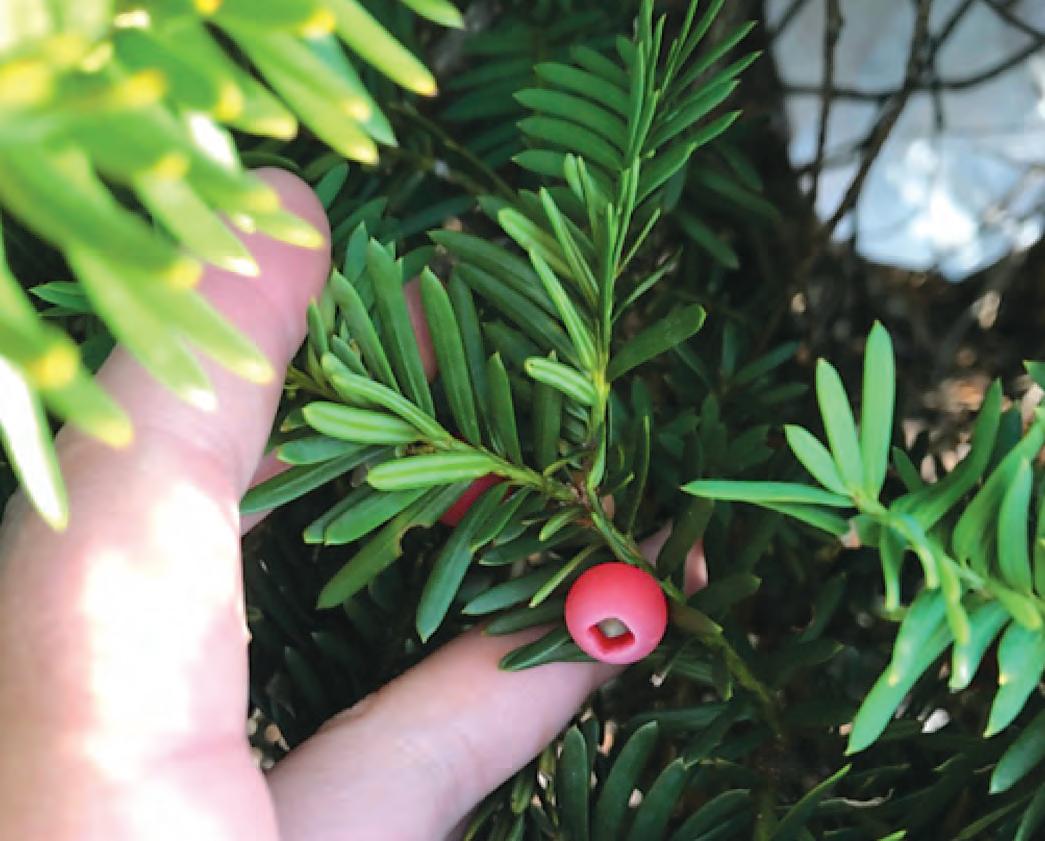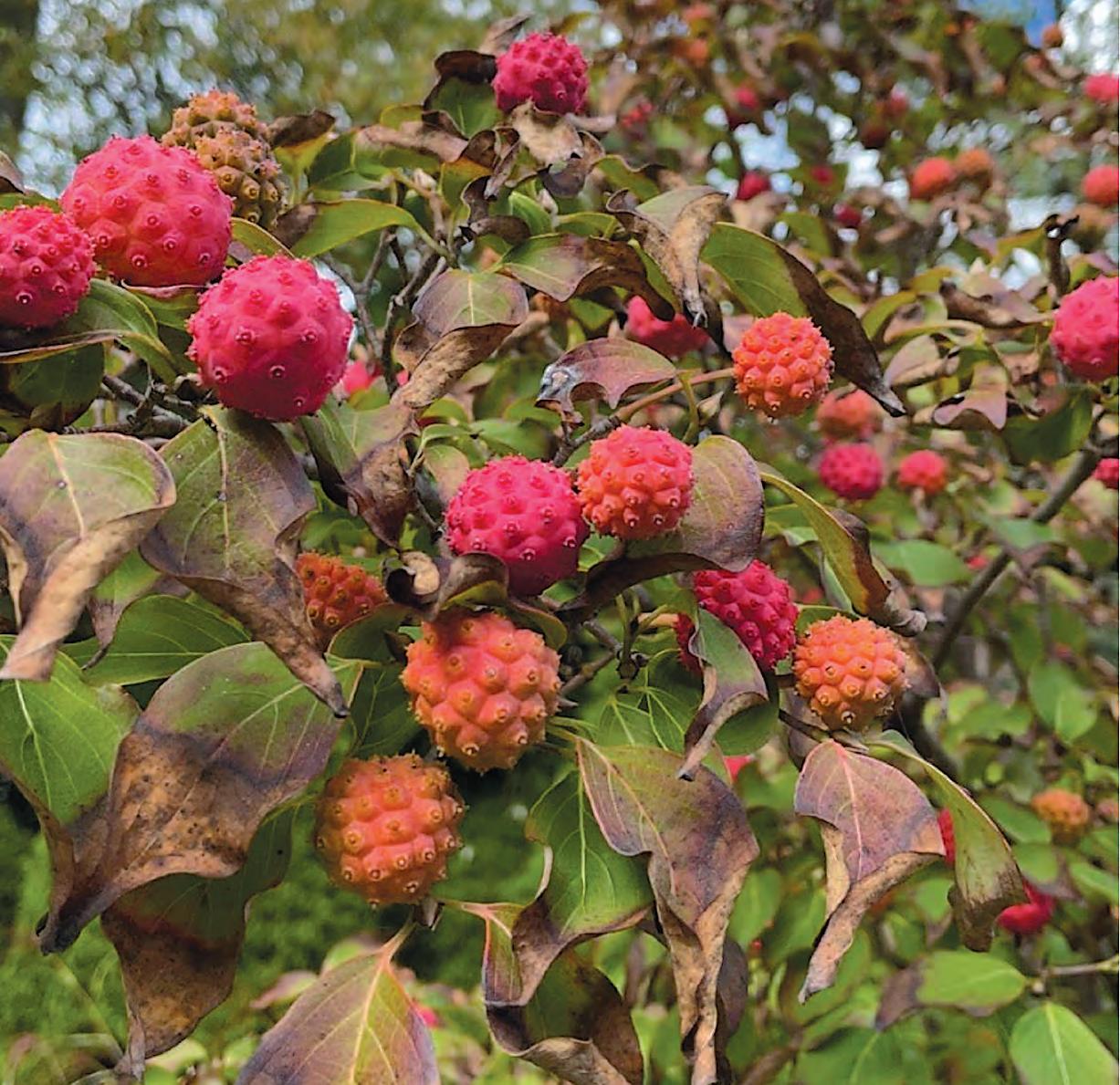
7 minute read
Feature: Foraging in your backyard
Foraging in your backyard
by Emily Edwards / Photographs by Emily Edwards (unless otherwise indicated)
Advertisement
Many people have asked themselves, “Can I eat these delicious-looking honeysuckle berries?” The answer is absolutely not. When foraging in the wild, or even at home, you have to be careful of the many delectablelooking fruits that can cause ailments ranging from a simple stomach ache to cardiac arrest. Foraging is no joke, but when educated on the right things to eat, you can open up a new range of flavors and native treasures. There are lots of things that are edible and waiting to be munched on in your garden. Here are some commonly foraged plants, as well as a couple to stay away from.
Tasty trees
When wandering in the garden from mid to late summer, one of the best things to try is a kousa dogwood berry (Cornus kousa). There is nothing more exciting than picking a bright red berry from this classic landscape tree and taking a bite. They mature in the late summer and have a mango-banana flavor (Photo 1).
The cornelian cherry (Cornus mas) is another dogwood that is a well-loved ornamental tree. It produces long “cherries” that are very tart (Photo 2).

1: Kousa dogwood

2: Cornelian cherry
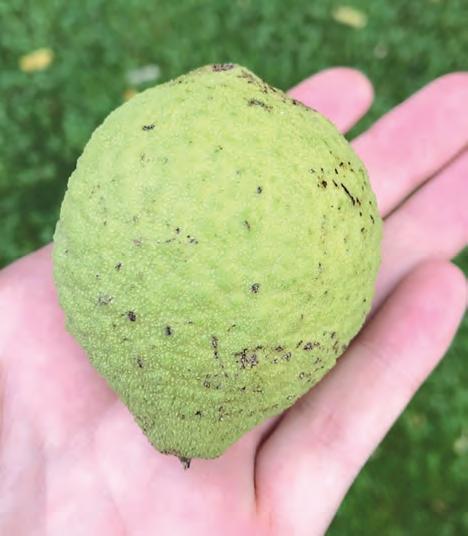
3: Black walnut before the citrusy skin has been peeled off.
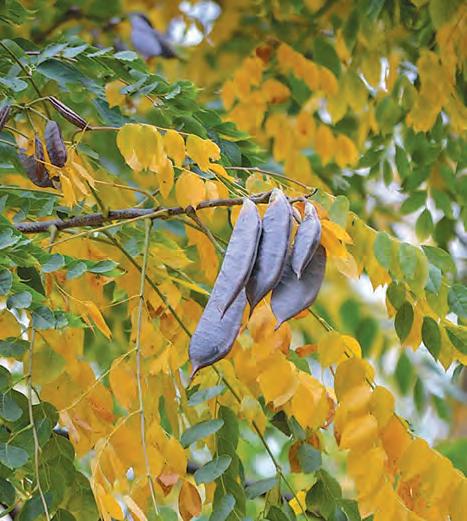

5: Characteristic mulberry leaves, all serrated and ranging from almost round margins to having multiple lobes.
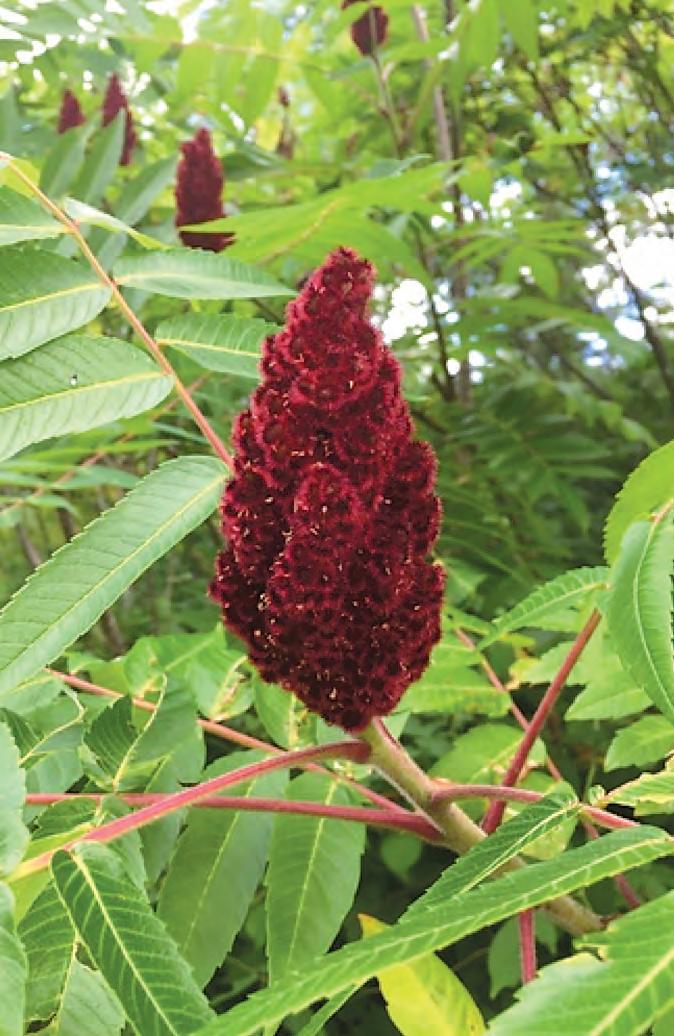
Characteristic mulberry leaves, all serrated and ranging from almost round margins to having multiple lobes.
6
Staghorn sumac
iNaturalist.org
The black walnut (Juglans nigra) is well known for being disliked because its toxicity inhibits many plants’ growth under and around the tree, as well as the tendency of the shells to dye everything black. But, of course, the nuts are edible. It just takes a small amount of effort to get perfectly good walnuts. When the walnuts fall off the trees, you peel off the citrusy skin to reveal the dark-colored nut. Then just leave it to dry outside for a few weeks and you’ve got perfectly good walnuts. (Photo 3).
Another messy but lesser-known tree is the Kentucky coffee tree (Gymnocladus dioicus). Despite the name, it is not actually in the coffee family and it grows well here in Michigan. When the pods are dropped in the late summer, you can roast the beans to have a coffee alternative—from your own backyard. The seeds and pods are toxic if you eat them unroasted, so roast with caution (Photo 4).
Mulberry trees are common trees that can be found easily, characterized by their red (Morus rubra) and white (Morus alba) fruit that somewhat resemble long raspberries, as well as their lobed leaves with serrated edges. Both the red and white varieties are edible, but the red are larger and sweeter, and liked more frequently. Fruiting is from June to July, with the red being found in rich woods (Photo 5).
Smooth sumac (Rhus glabra) and staghorn sumac (Rhus typhina) produce bright red flowers in early June and the blooms last into mid to late fall. They can be found in fields and openings and tend to be fairly common. As soon as the flowers bloom in early summer, you can steep them in water overnight and they produce a lovely lemonade and tea flavor. The poison sumac is present in Michigan and shouldn’t be touched at all, as it has the itchy qualities of poison ivy. Poison sumac has white flowers and berries, bearing not much resemblance to the bright red flowers of smooth and staghorn sumac (Photos 6 and 7).
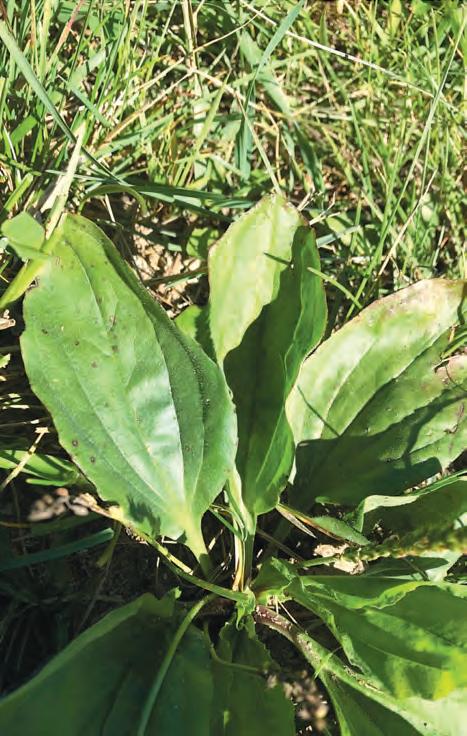
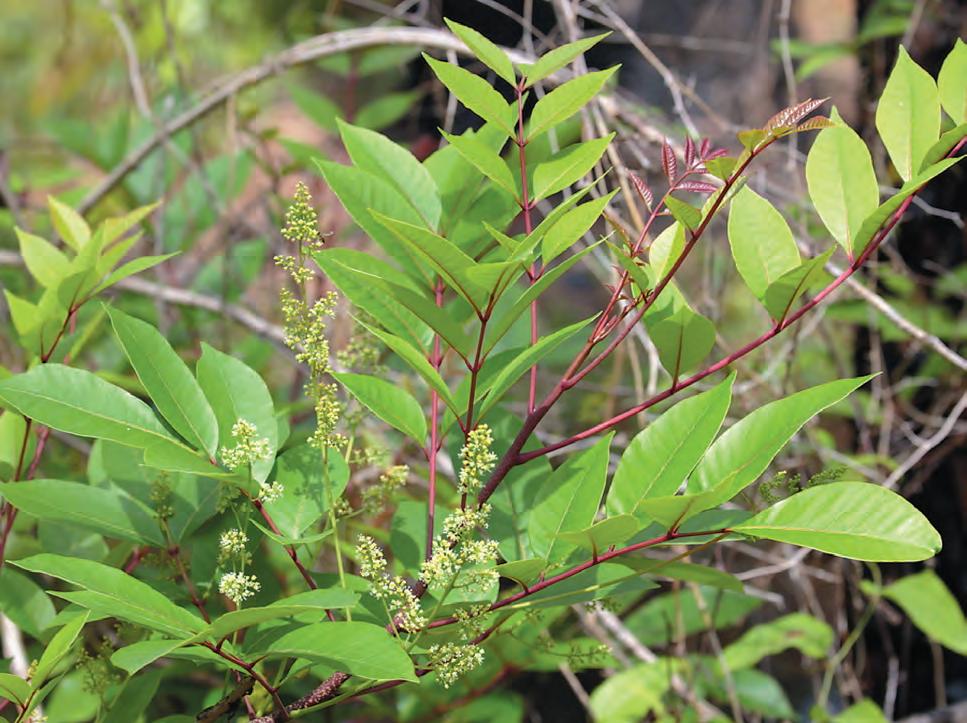
continued from previous page
Weeds are edible too?
A common lawn weed with leafy greens, broadleaf or common plantain (Plantago major) is good in salads or fried up in a stir-fry dish (Photo 8).
Lamb’s quarters (Chenopodium album) is found in gardens, fields and waste spaces. It is in the quinoa family and one of the most successful cosmopolitan weeds in the world. The leaves are edible and have a distinct avocado-asparagus flavor. They can be eaten raw or cooked. The grain is edible too. (Photos 9 and 10).
Purslane (Portulaca oleracea) is a widespread weed in many parts of the world. The leaves are edible and have a citrusy flavor (Photo 11).
Perennials: More than just a snack
Found in fields and roadsides, yarrow (Achillea millefolium) is less common in the wild, but is cultivated for a wide variety of flower colors. The flavor of the leaves is less than ideal, but when chewed and applied to an open cut, it will stop the bleeding quickly (Photo 12).
Wild bergamot or bee balm (Monarda fistulosa) is found in dry woodland edges and thickets. A butterfly favorite, bergamot is used as an essential oil for aromatherapy (Photo 13).
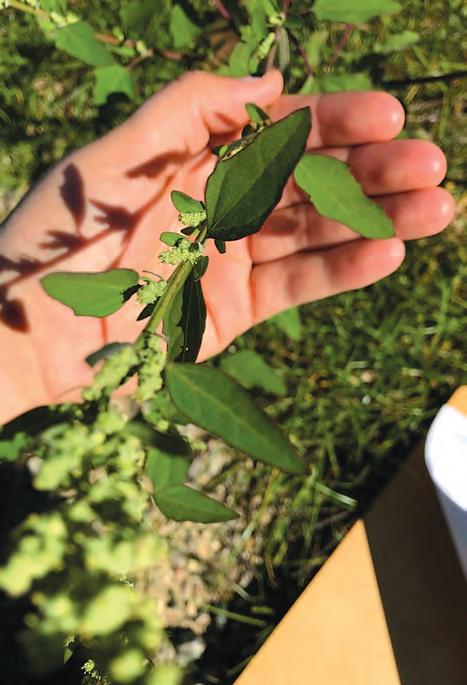
Stay away from these
Jimsonweed (Datura stramonium) belongs to the nightshade family, commonly found in waste areas. It is violently
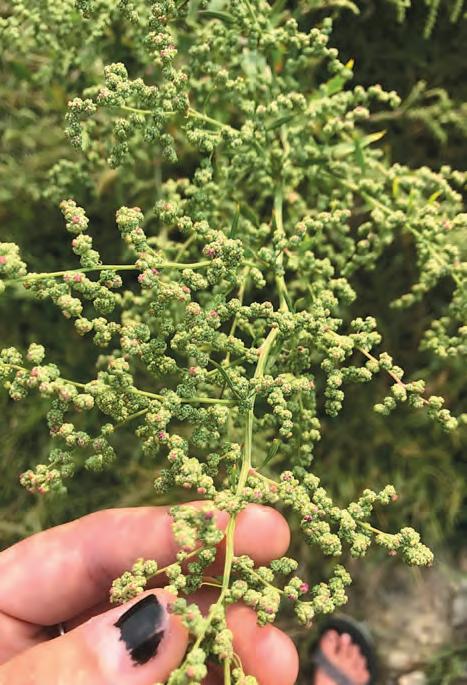
PHOTOGRAPHS BY EMILY EDWARDS (unless otherwise indicated)
9
Lamb’s quarters: leaves.
10
Lamb’s quarters: grains.
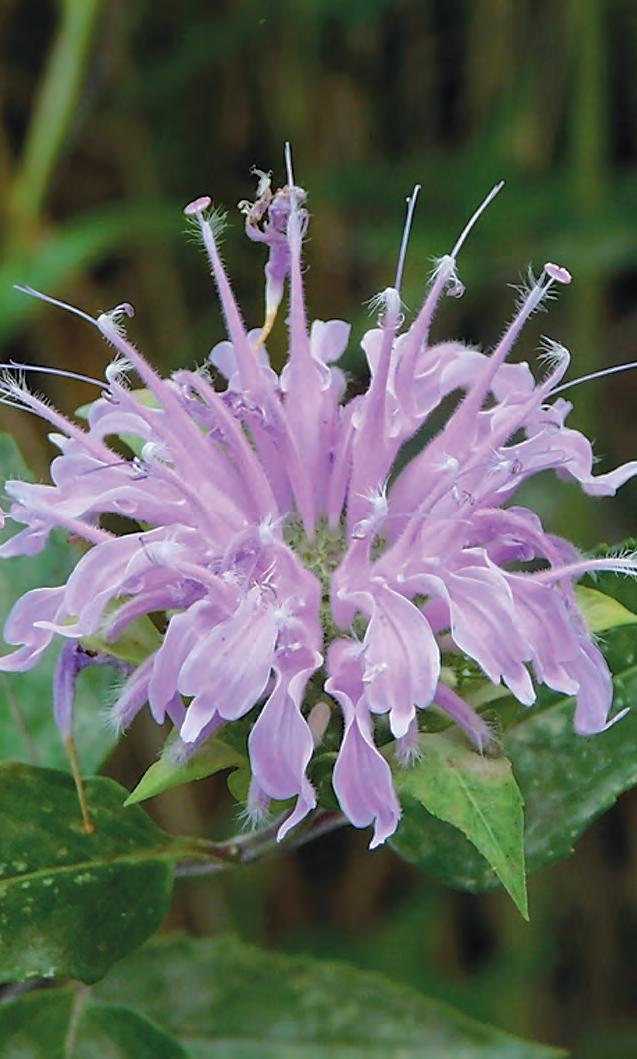

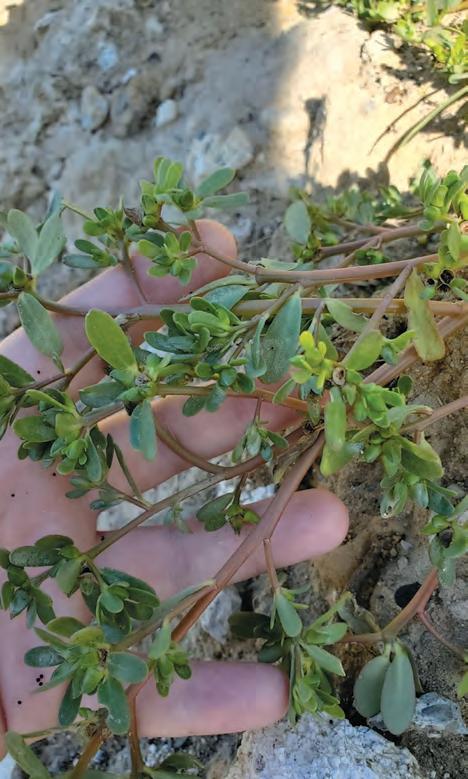
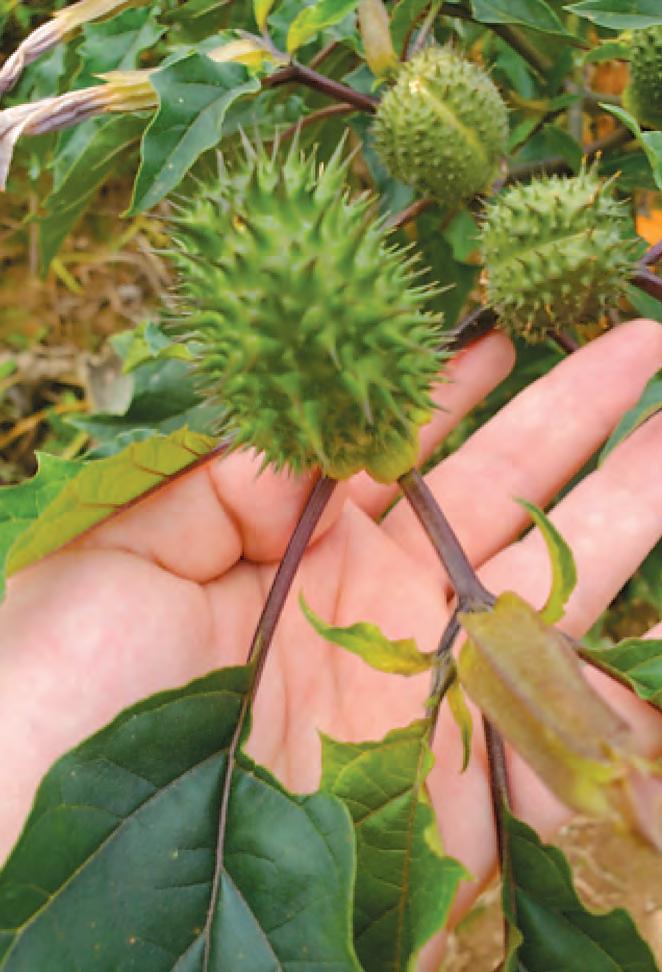
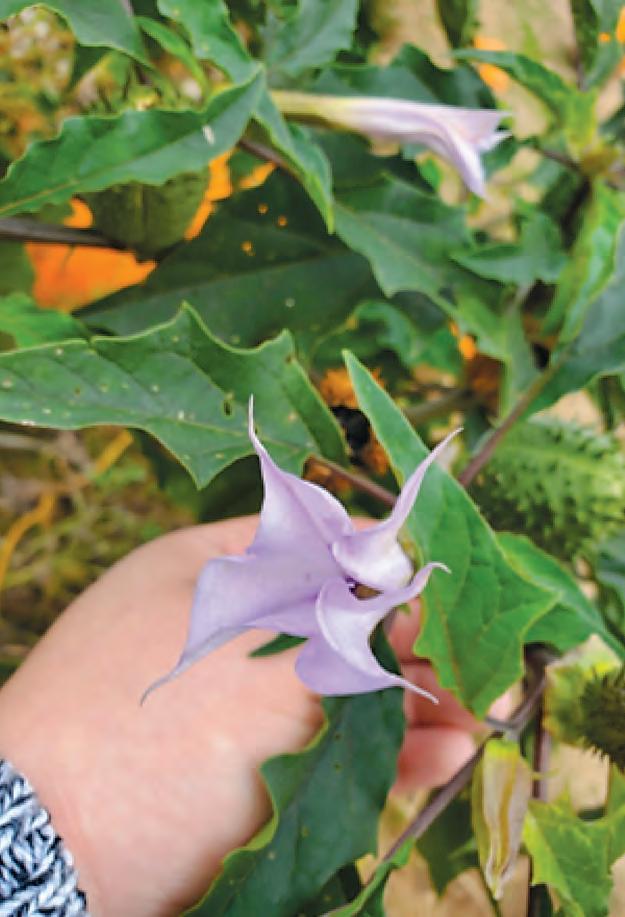
Jimsonweed and its lavender-colored flower.
15
Jimsonweed seed pod. toxic and known to cause severe hallucinations when ingesting the seeds (Photos 14 and 15).
American or Canadian yew (Taxus canadensis) is a common ornamental shrub. All parts of the plant are toxic except the aril, the juicy red “berry” surrounding the seed, which is very much toxic (Photo 16).
American pokeweed (Phytolacca americana) has bright red stems and dark purple fruits. All parts are poisonous, except in the spring when some brave folks eat it as a spring green after cooking through two changes of water. Birds enjoy the berries in late summer (Photo 17).
Takeaways
Exploring new things around the yard can be exciting, but DO NOT eat something unless it has been properly identified. To learn more about foraging, it is best to start with a field guide for your specific region. A great foraging resource (and a reference used for this article) is the Peterson Field Guide to Medicinal Plants and Herbs of Eastern and Central North America (by Foster and Duke). This book includes the history behind the plants and herbs in Michigan, including what tribes used particular plants and for what purposes. The Field Manual of Michigan Flora (by Voss and Reznicek) is another great resource to start identifying and comparing look-alikes for your favorite foraged plants.
Emily Edwards is a Head Gardener and Biologist at Atzinger Gardens. Atzinger Gardens creates and tends gardens around the Ann Arbor and Plymouth areas. Visit AtzingerGardens.com or call 734-272-7321 for monthly maintenance or to design and complete a new garden.

